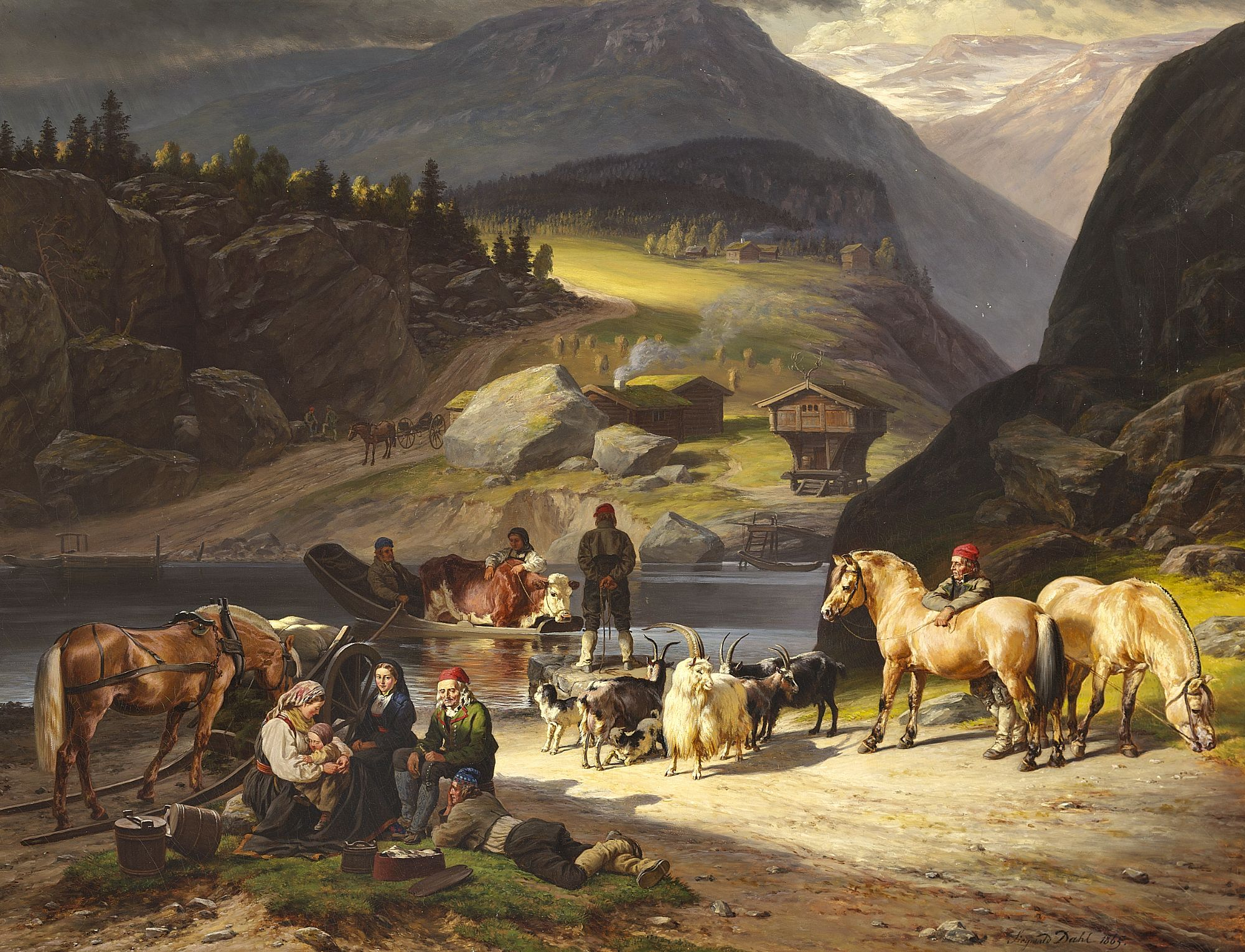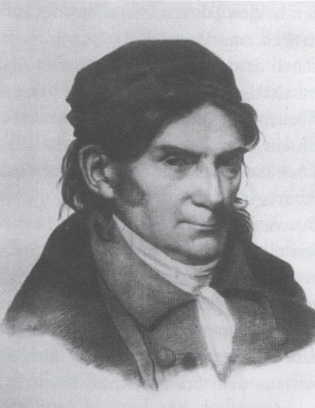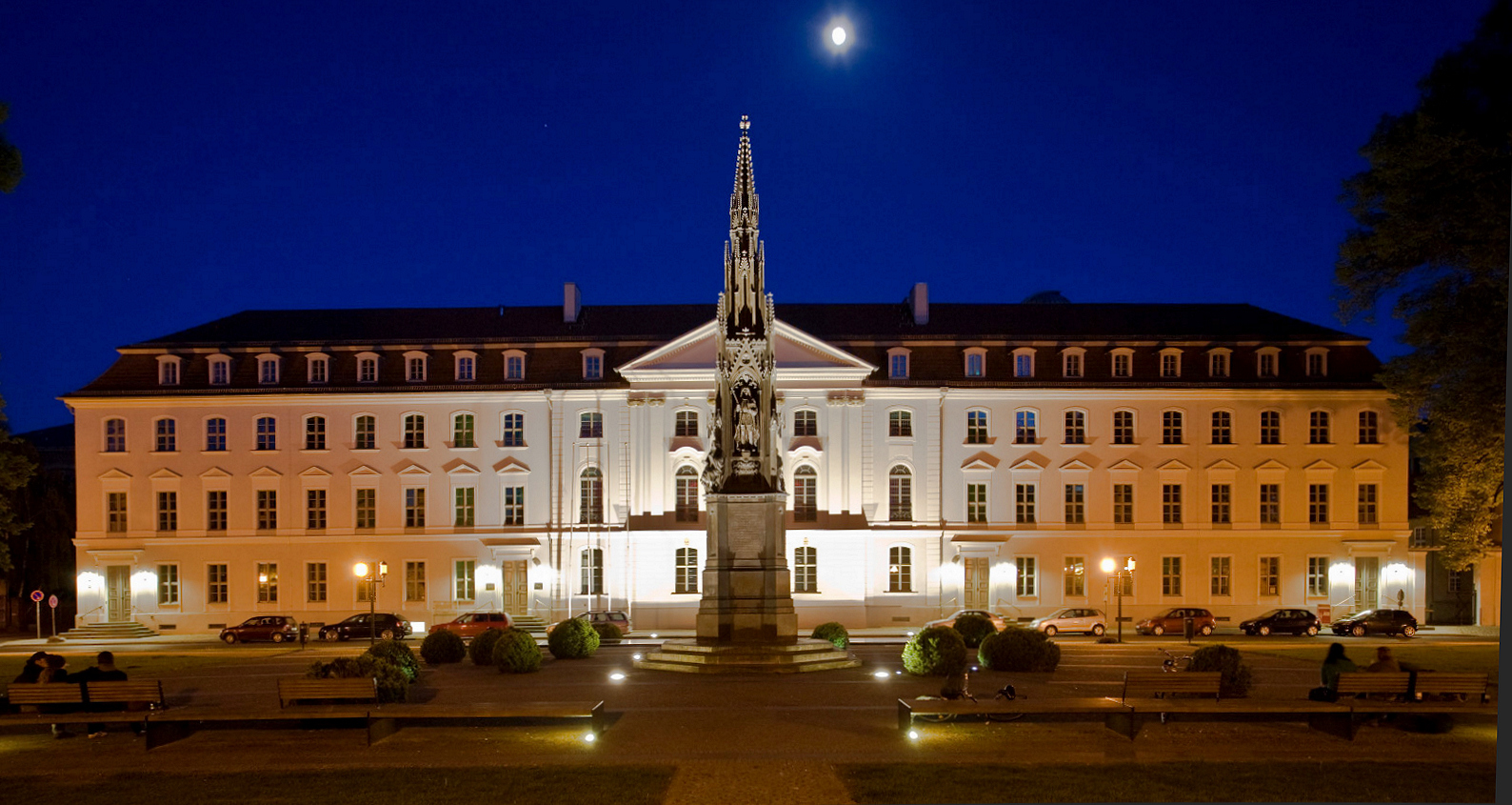|
Cairn In Snow
''Cairn in Snow'', also known as ''Dolmen in the snow'', (german: Hünengrab im Schnee, literally "Giant's grave in the snow") is a landscape painting by the German painter Caspar David Friedrich. Friedrich is noted for his landscapes depicting features such as trees or Gothic ruins, silhouetted against the sky or in morning mists. The painting depicts leafless trees in the winter snow, with the tops of two of the trees broken off and the third bent by the prevailing wind, giving the work a haunted, spectral air. It is a Romantic allegorical landscape, depicting a stone cairn or dolmen set amid three oak trees on a hilltop, with a contemplative melancholy mood. It was probably painted around 1807, making it among Friedrich's first oil paintings. It measures and has been held by the Galerie Neue Meister in Dresden since 1905. The main elements of the painting are taken from different locations in eastern Germany. The cairn is thought to be based on the Neolithic burial si ... [...More Info...] [...Related Items...] OR: [Wikipedia] [Google] [Baidu] |
Caspar David Friedrich
Caspar David Friedrich (5 September 1774 – 7 May 1840) was a 19th-century German Romantic landscape painter, generally considered the most important German artist of his generation. He is best known for his mid-period allegorical landscapes, which typically feature contemplative figures silhouetted against night skies, morning mists, barren trees or Gothic ruins. His primary interest was the contemplation of nature, and his often symbolic and anti- classical work seeks to convey a subjective, emotional response to the natural world. Friedrich's paintings characteristically set a human presence in diminished perspective amid expansive landscapes, reducing the figures to a scale that, according to the art historian Christopher John Murray, directs "the viewer's gaze towards their metaphysical dimension". Friedrich was born in the town of Greifswald on the Baltic Sea in what was at the time Swedish Pomerania. He studied in Copenhagen until 1798, before settling in Dresden. He ... [...More Info...] [...Related Items...] OR: [Wikipedia] [Google] [Baidu] |
Wustrow, Mecklenburg-Strelitz
Wustrow () is a municipality in the Mecklenburgische Seenplatte district, in Mecklenburg-Vorpommern, Germany Germany,, officially the Federal Republic of Germany, is a country in Central Europe. It is the second most populous country in Europe after Russia, and the most populous member state of the European Union. Germany is situated betwe .... References Grand Duchy of Mecklenburg-Strelitz {{MecklenburgischeSeenplatte-geo-stub ... [...More Info...] [...Related Items...] OR: [Wikipedia] [Google] [Baidu] |
Seymour Drescher
Seymour Drescher (born 1934) is an American historian and a professor at the University of Pittsburgh, known for his studies on Alexis de Tocqueville and slavery and his published work ''Econocide''. Career Seymour Drescher has been publishing since 1959. He initially focused his research on Tocqueville. He was the first to attract scholarly attention to Tocqueville's views of problems of poverty, colonial slavery, and race. Of his work in this field, Tocqueville scholar Matthew Mancini, calls Seymour Drescher "arguably the finest Tocqueville scholar writing in English..." Drescher's more recent historical studies have been primarily in the history of slavery and abolition in the Atlantic world. His book ''Econocide'' made a convincing counter-claim to Eric Williams' argument that abolition happened in part due to the economic decline of the British West Indies (BWI) after 1775. Drescher instead states that the slavery-based system which underpinned the economy of the BWI cont ... [...More Info...] [...Related Items...] OR: [Wikipedia] [Google] [Baidu] |
List Of Works By Caspar David Friedrich
This is an incomplete list of works by the German Romantic artist Caspar David Friedrich (1774–1840) by completion date where known. Friedrich was a prolific artist who produced over 500 attributed works; however, he is generally known for only a small number of works seen as emblems of Romanticism.Siegel, 3 In line with Romantic ideals of the time, Friedrich intended that his paintings would function visually only, and thus he was cautious that the titles given to his work were not overly descriptive or evocative. It is likely that some of today's relatively literal titles, such as ''The Stages of Life'', were not given by the artist himself, but were instead adopted during one of the revivals of interest in the artist during the late 19th or early 20th century. ". designboom ... [...More Info...] [...Related Items...] OR: [Wikipedia] [Google] [Baidu] |
Johann Siegwald Dahl
Johann Siegwald Dahl (16 August 1827, Dresden - 15 June 1902, Dresden) was a German animal painter. Life and work He was one of nine children born to the Norwegian painter, Johan Christian Dahl and his first wife Emilie. Of those, only he and one sister survived to adulthood. His first art lessons came from his father. Later, he studied animal painting with . After three more years attending the Dresden Academy of Fine Arts, he paid a visit to London to study with Edwin Landseer; another famous animal painter. He also spent some time in Paris. Upon his father's death in 1857, he donated a collection of his studies and drawings to the National Gallery in Oslo and the . He became an honorary member of the Gemäldegalerie Alte Meister in 1864. His best known works involve Norwegian motifs, inspired by his father's works and numerous visits to Norway, but he also created some portraits. His works may be seen at several museums in Dresden and Hanover. His sister Caroline was married ... [...More Info...] [...Related Items...] OR: [Wikipedia] [Google] [Baidu] |
Johan Christian Dahl
Johan Christian Claussen Dahl (24 February 178814 October 1857), often known as or , was a Danish-Norwegian artist who is considered the first great romantic painter in Norway, the founder of the "golden age" of Norwegian painting, and, by some, one of the greatest European artists of all time. He is often described as "the father of Norwegian landscape painting" and is regarded as the first Norwegian painter to reach a level of artistic accomplishment comparable to that attained by the greatest European artists of his day. He was also the first to acquire genuine fame and cultural renown abroad. As one critic has put it, "J.C. Dahl occupies a central position in Norwegian artistic life of the first half of the 19th century. Although Dahl spent much of his life outside of Norway, his love for his country is clear in the motifs he chose for his paintings and in his extraordinary efforts on behalf of Norwegian culture generally. He was, for example, a key figure in the founding of ... [...More Info...] [...Related Items...] OR: [Wikipedia] [Google] [Baidu] |
Karl Schildener
Karl Schildener (26 August 1777 – 28 December 1843) was a German lawyer, legal historian and university lecturer. Life and achievements Schildener was born on 26 August 1777 in Greifswald in what was then Swedish Pomerania. His father was the council pharmacist Johann Karl Schildener (1739-1803), his mother Christina Liboria (1752-1824) a daughter of Balzer Peter Vahl, mayor of Greifswald from 1788 to 1792. Already in 1792 he was enrolled as a student of law at the University of Greifswald, from 1796 he studied at the University of Jena. There he received his doctorate in law in 1798. In 1800 he began studying Swedish law at Uppsala University. In 1802 he was appointed adjunct professor at the University of Greifswald, as teacher of Swedish Law. In 1806 Schildener was appointed to a Swedish commission to translate Swedish legal texts into German so that they could be adopted for Swedish Pomerania. The commission, in which Schildener collaborated with Ernst Moritz Arndt, fir ... [...More Info...] [...Related Items...] OR: [Wikipedia] [Google] [Baidu] |
Greifswald University
The University of Greifswald (; german: Universität Greifswald), formerly also known as “Ernst-Moritz-Arndt University of Greifswald“, is a public research university located in Greifswald, Germany, in the state of Mecklenburg-Western Pomerania. Founded in 1456 (teaching existed since 1436), it is one of the oldest universities in Europe, with generations of notable alumni and staff having studied or worked in Greifswald. As the fourth oldest university in present Germany, it was temporarily also the oldest university of the Kingdoms of Sweden (1648–1815) and Prussia (1815–1945), respectively. Approximately two-thirds of the 10,179 students are from outside the state, including international students from 90 countries all over the world. Due to the small-town atmosphere, the pronounced architectural presence of the alma mater across town, and the young, academic flair in the streets, Greifswald is often described as a "university with a town built around it" rather ... [...More Info...] [...Related Items...] OR: [Wikipedia] [Google] [Baidu] |
Tetschen Altar
''Cross in the Mountains'', also known as the ''Tetschen Altar'', is an oil painting by the German artist Caspar David Friedrich designed as an altarpiece. Among Friedrich's first major works, the 1808 painting marked an important break with the conventions of landscape painting by including Christian iconography. In the hierarchy of genres, religious (history) painting was considered the highest genre of art; Friedrich's use of landscape to evoke a spiritual message was thus controversial, causing debate between proponents of neoclassical ideals and the new German Romanticism of Friedrich and his peers. Description The canvas depicts a golden summit cross with the crucified Jesus silhouetted in profile on a rock atop a mountain, surrounded by fir trees below. The cross, facing toward the sun, reaches the highest point in the picture but is presented obliquely and from a distance. The pictorial space is almost two-dimensional, and by lacking any foreground element, the sc ... [...More Info...] [...Related Items...] OR: [Wikipedia] [Google] [Baidu] |
Battle Of Jena–Auerstedt
The twin battles of Jena and Auerstedt (; older spelling: ''Auerstädt'') were fought on 14 October 1806 on the plateau west of the river Saale in today's Germany, between the forces of Napoleon I of France and Frederick William III of Prussia. The defeat suffered by the Prussian Army subjugated the Kingdom of Prussia to the French Empire until the Sixth Coalition was formed in 1813. Several figures who were later integral to the reformation of the Prussian Army participated at Jena–Auerstedt, including Gebhard von Blücher, Carl von Clausewitz, August Neidhardt von Gneisenau, Gerhard von Scharnhorst, and Hermann von Boyen. Background Following the Prussian declaration of war, Napoleon initiated his campaign against the Fourth Coalition by thrusting a 180,000-strong force through the Frankenwald. The Prussian army, meanwhile, awaited Napoleon's advance with a force composed of about 130,000 Prussians and 20,000 Saxons. The Prussians were not organized well enough and ... [...More Info...] [...Related Items...] OR: [Wikipedia] [Google] [Baidu] |
Prussia
Prussia, , Old Prussian: ''Prūsa'' or ''Prūsija'' was a German state on the southeast coast of the Baltic Sea. It formed the German Empire under Prussian rule when it united the German states in 1871. It was ''de facto'' dissolved by an emergency decree transferring powers of the Prussian government to German Chancellor Franz von Papen in 1932 and ''de jure'' by an Allied decree in 1947. For centuries, the House of Hohenzollern ruled Prussia, expanding its size with the Prussian Army. Prussia, with its capital at Königsberg and then, when it became the Kingdom of Prussia in 1701, Berlin, decisively shaped the history of Germany. In 1871, Prussian Minister-President Otto von Bismarck united most German principalities into the German Empire under his leadership, although this was considered to be a "Lesser Germany" because Austria and Switzerland were not included. In November 1918, the monarchies were abolished and the nobility lost its political power during the Ger ... [...More Info...] [...Related Items...] OR: [Wikipedia] [Google] [Baidu] |
Entombment Of Christ
The burial of Jesus refers to the entombment of the body of Jesus after crucifixion, before the eve of the sabbath described in the New Testament. According to the canonical gospel narratives, he was placed in a tomb by a councillor of the sanhedrin named Joseph of Arimathea; according to , he was laid in a tomb by "the council as a whole." In art, it is often called the Entombment of Christ. Biblical accounts The earliest reference to a burial of Jesus is in a letter of Paul. Writing to the Corinthians around the year 54 AD, he refers to the account he had received of the death and resurrection of Jesus ("and that he was buried, and that he was raised on the third day according to the Scriptures"). The four canonical gospels, written between 66 and 95, conclude with an extended narrative of Jesus' arrest, trial, crucifixion, entombment, and resurrection.Powell, Mark A. ''Introducing the New Testament''. Baker Academic, 2009. They narrate how, on the evening of the Cruci ... [...More Info...] [...Related Items...] OR: [Wikipedia] [Google] [Baidu] |








